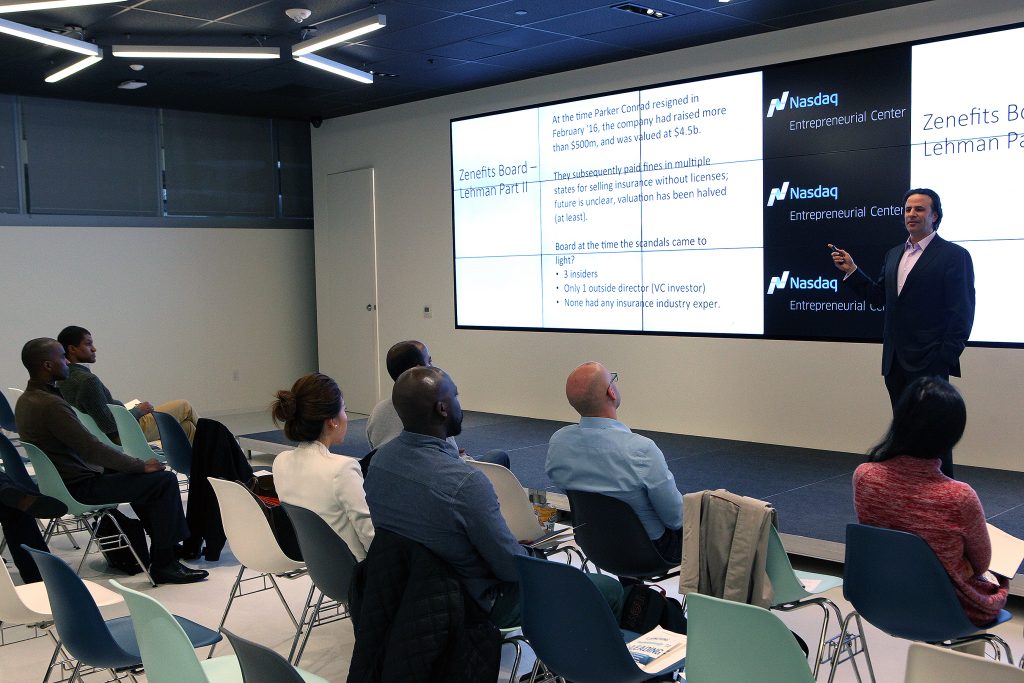I recently had dinner with a public company CEO and one of his board members. Among other things, they wanted my thoughts on how their new “roll-up” strategy was likely to be perceived by investors. Inasmuch as this has been a recurring conversation I’ve had over the last 15 years, I thought I would re-create it for the benefit of small-cap officers, directors, and service providers.
The conversation went something like this:
CEO: “I think our industry is ripe for a roll-up. Our bankers and lawyers are of a similar mind. But when I socialized the idea over dinner recently with [board member], she told me that small-cap investors, in particular, don’t like roll-ups. I was surprised to hear that. Is it true?”
Me: “I wouldn’t agree that smart, small-cap investors dislike roll-ups.”
Board member: “Oh?”
Me: “Smart, small-cap investors… hate roll-ups.”
CEO: “Seriously? Why? These companies we’re looking at can be consolidated for a song compared to the value we can create.”

Me: “Data. Data depict that the overwhelming majority of small-cap acquisitions are value-destructive. It’s not even a close call. In fact, though there have surely been some success stories…. as we sit here, I’m not sure I can name one. To be sure, lots of inexperienced retail investors view roll-up strategies favorably. But seasoned retail and institutional investors know there is very little precedent for that strategy’s success in the small-cap realm.”
Board member: “Assuming your data comment is accurate, what would you attribute all the failures to?”
Me: “First, it’s not ‘my data,’ per se. When I get home I’ll email you research from the Harvard Business Review depicting that something like 70–90 percent of acquisitions are value destructive. And that includes large companies with hyper-experienced leadership, and sophisticated, purpose-built integration teams. When you consider that small-caps are often run by far less-experienced executives, and might not have any experienced integration professionals, you can get a sense why the failure rate for small-cap acquisitions is probably much closer to 90 percent versus 70 percent.”
CEO: “OK, understood. But our bankers, and…”
Me: [interrupting] “Look, as we’ve discussed before, there are some terrific small-cap investment bankers, and equally skilled small-cap attorneys – full stop. But, I think you and your board need to be a bit more cognizant of the embedded conflicts of interest here. That is, M&A is quite literally the ‘Olympic Games’ of fees and billing for service providers. So with all due respect to your service providers, you need to take the ‘advice’ you’re receiving with more than a grain or two of salt.”
Board member: “Fair enough. How would you suggest we fine-tune the conversation with the bankers, in particular?”
Me: “It’s pretty easy, really. Move the conversation from professional opinion and valuation hyperbole… to data. In other words, ask them to show you the last several small-cap companies that look and feel like you that undertook a successful roll-up strategy. As you can probably tell from my voice and body language, I already have a pretty good sense of how that quiz turns out – it’s an incredibly short list. And, most importantly, every experienced investor knows that.”
Board member: “So that’s it? The precedent isn’t great… so we should punt? That’s what I should tell my colleagues on the transaction committee of the board?”
Me: “Well, look, your board is seated to work together with management to architect a strategy that drives long-term value for your shareholders, and then to make sure that management is tactically executing the same. If the board’s judgment, after all is said and done, is that the roll-up you’re considering is the right strategy for shareholders, then that’s your decision. What I’m telling you is that savvy investors are forensic observers; they are keen students of history. When they know that certain fact patterns have been overwhelmingly value-destructive, they are guided by that precedent until proven otherwise. In the interim, that circumspection can be really impactful on a company like yours.”
CEO: “How? What are some examples of what you’re saying?”
Me: “Sure. First, whether investors sell your stock, short your stock, or simply don’t trade it at all due to apathy, your stock price/volume might suffer, making any attempts to access the equity capital markets more dilutive. In the worst-case scenario, it could all but foreclose access to the equity markets. Second, if trading volume dries up, you also won’t be able to use your stock as acquisition currency as you’re planning; i.e., high-quality companies won’t want illiquid stock as purchase consideration. Third, high-quality, sell-side research firms have seen the same movies that fund managers have, so the chance of getting impactful research is going to be diminished. And, fourth, but certainly not least important, many small-cap officers and directors – in my experience – underestimate how much a pressured/languishing stock can impact employee recruitment, retention, and morale.”
Board member: “Just so I am clear, should I construe your admonishment to mean that small-cap, buy-side folks are intuitively against all acquisitions? Even ‘one-offs’?”
Me: “Great question. The short answer is that organic growth is nearly always going to be valued more highly than corporate acquisitions in the small-cap realm. That said, there is a ‘flavor’ of small-cap M&A that can be quite successful: ‘tuck-in’ technology/IP asset purchases. In other words, unique situations, where it’s faster, easier, and cheaper to buy technology, intellectual property, or physical property rights from a third-party, can be quite accretive. The reason why they can work well is that you’re buying a ‘widget,’ and perhaps a small team of technical people, and that’s it. You’re not acquiring liabilities, business models, corporate cultures, fuzzy accounting, and material headcount. I can’t tell you what the failure rate is for asset acquisitions, but I’m highly confident it’s nowhere near the 70–90 percent failure rate of corporate M&A. Incidentally, John Chambers at Cisco perfected the art of ‘tuck-in’ technology acquisitions.”
This article was originally published on LinkedIn Pulse.
________________



